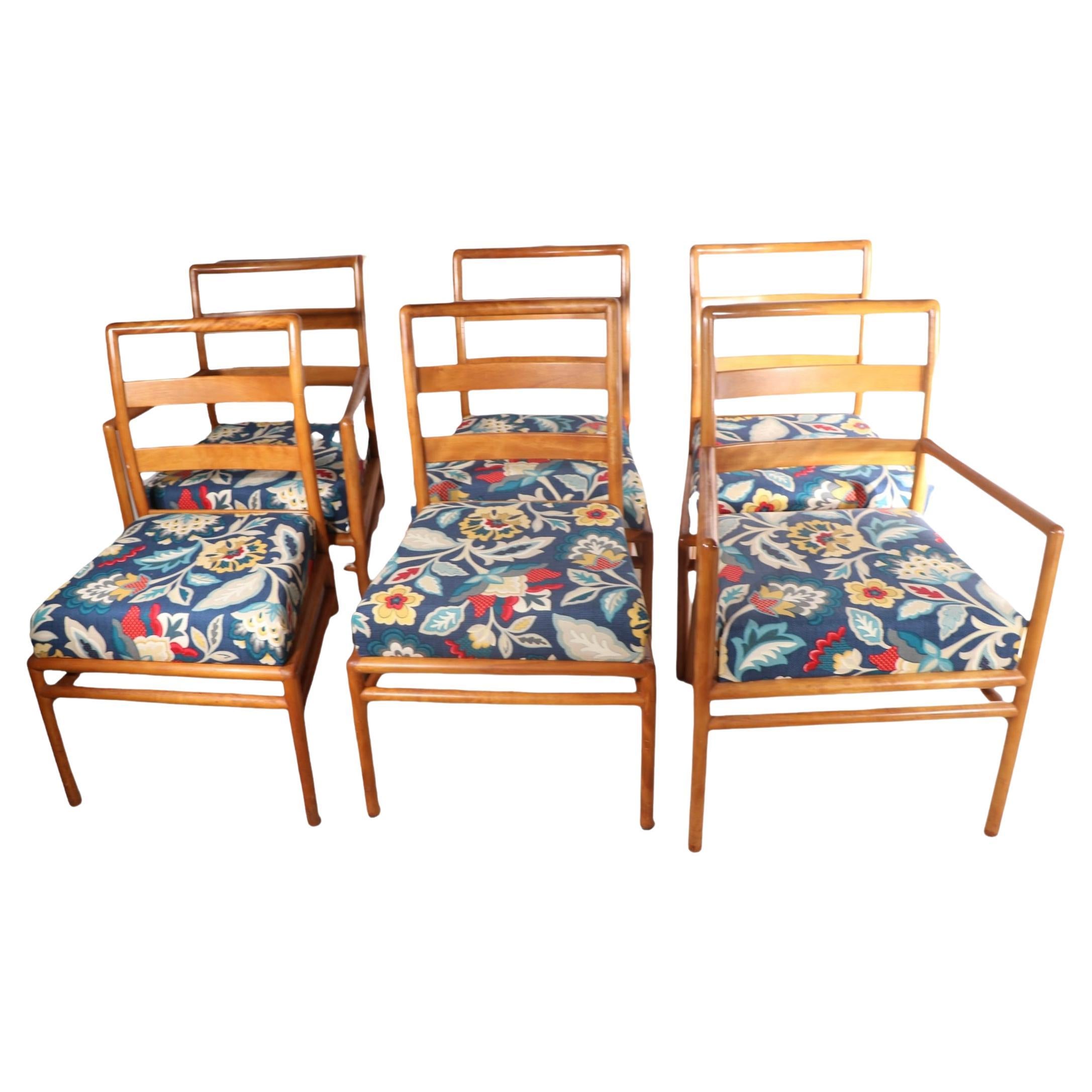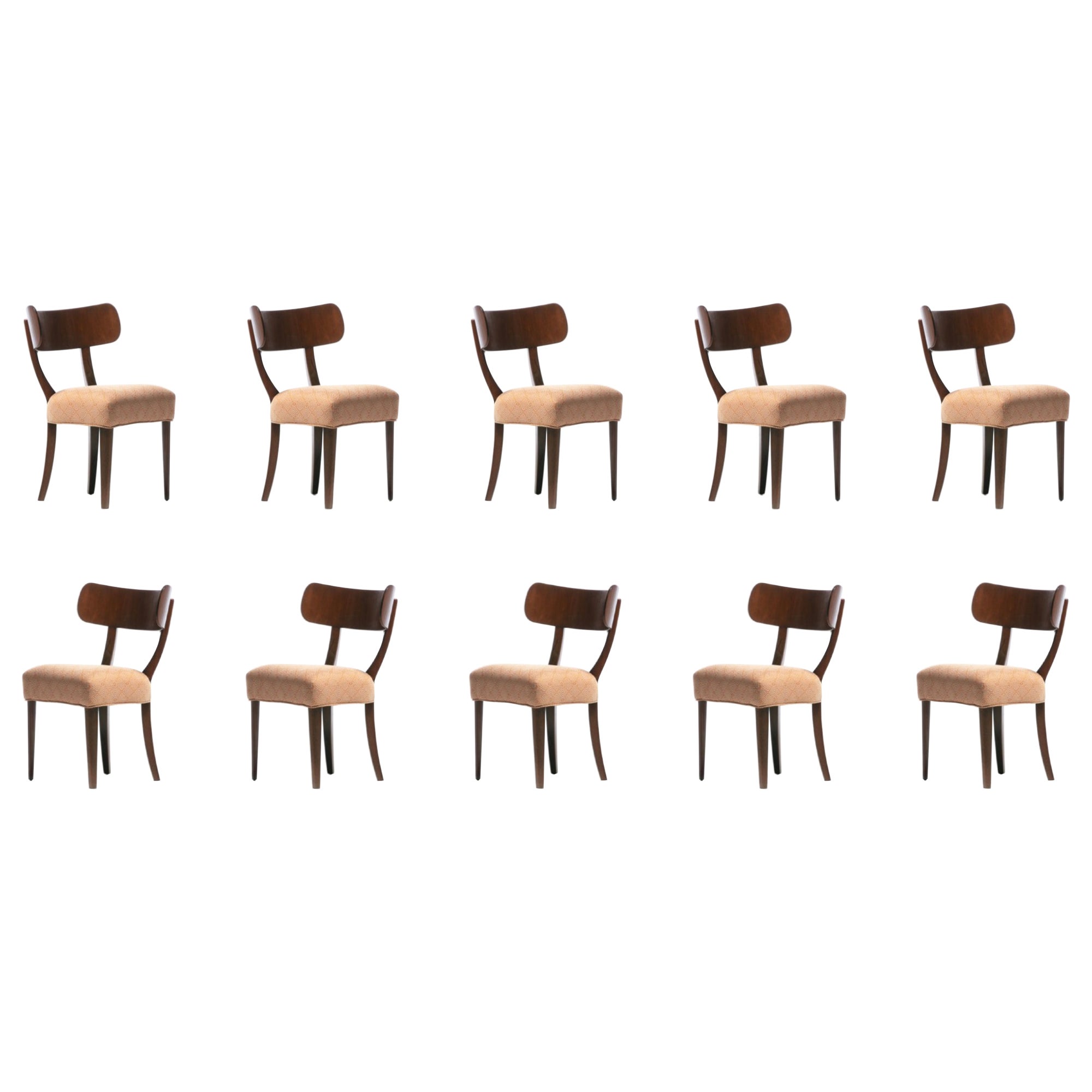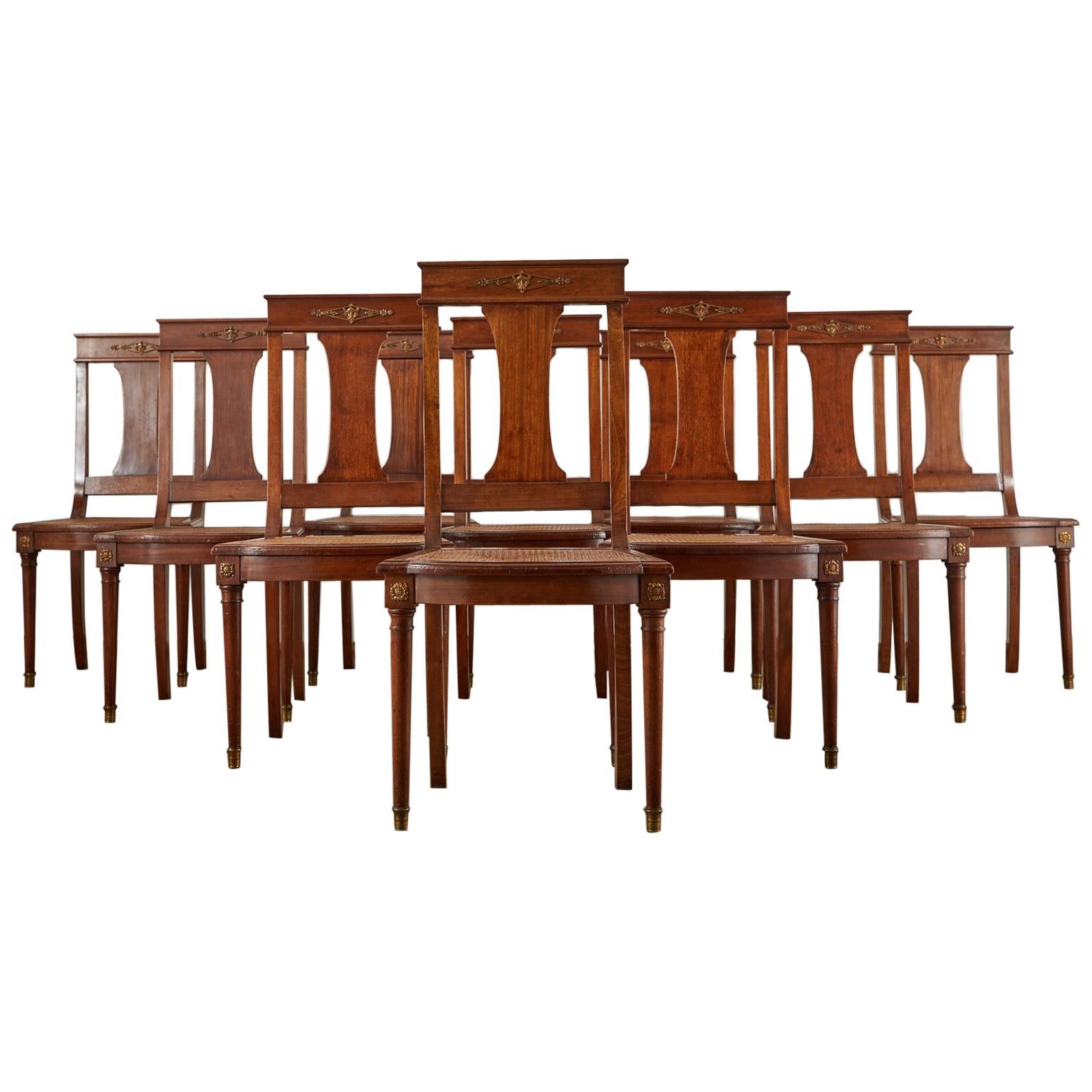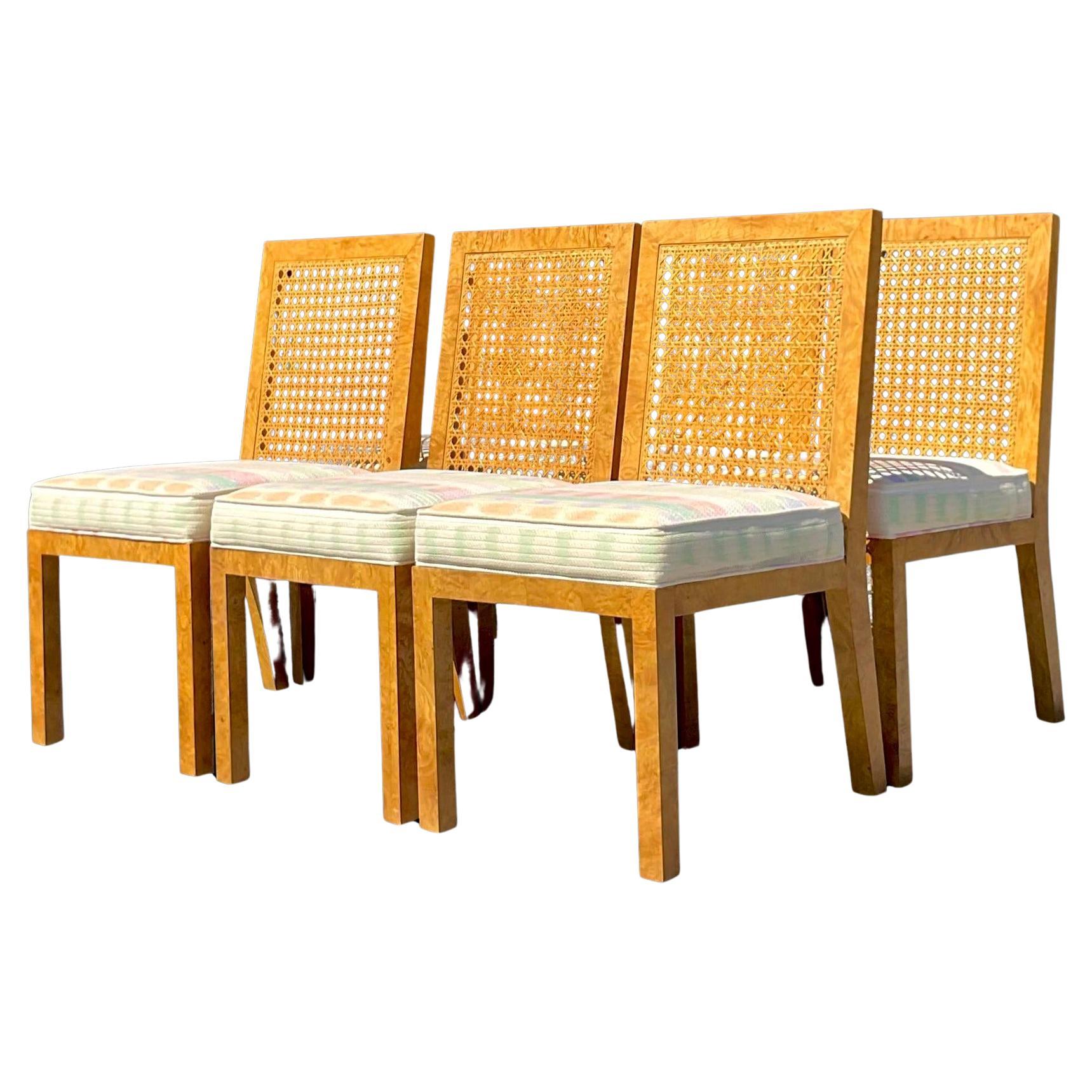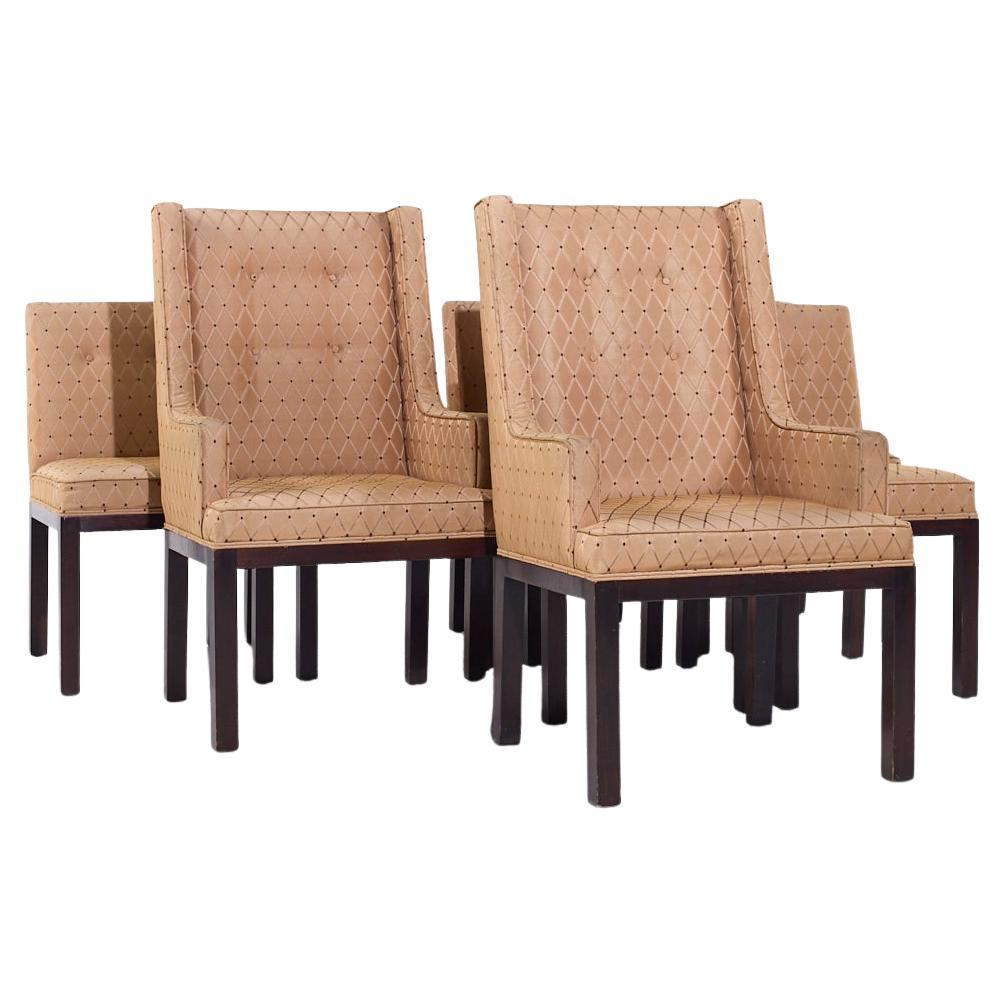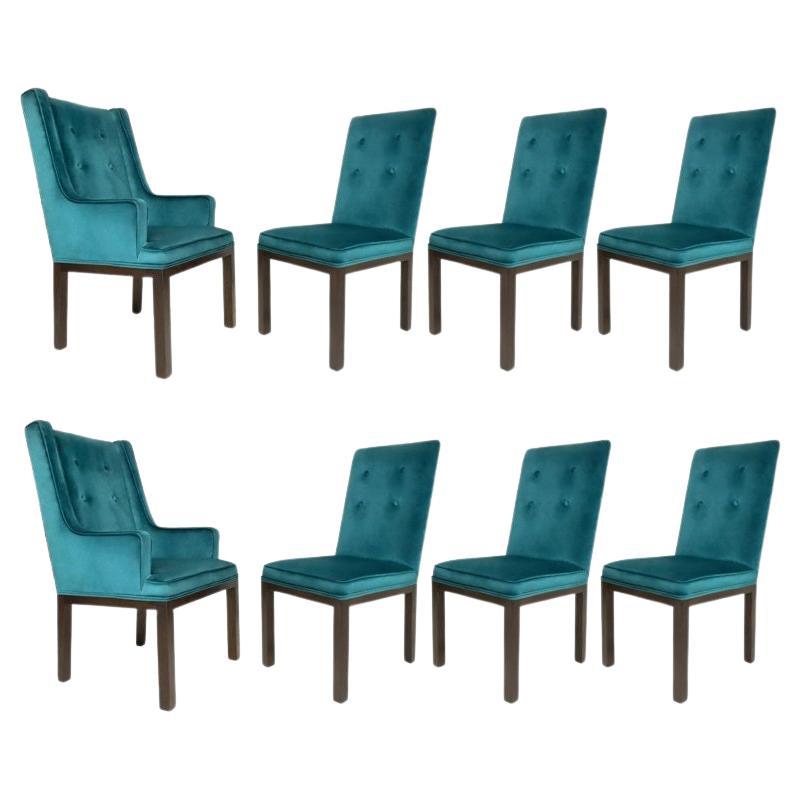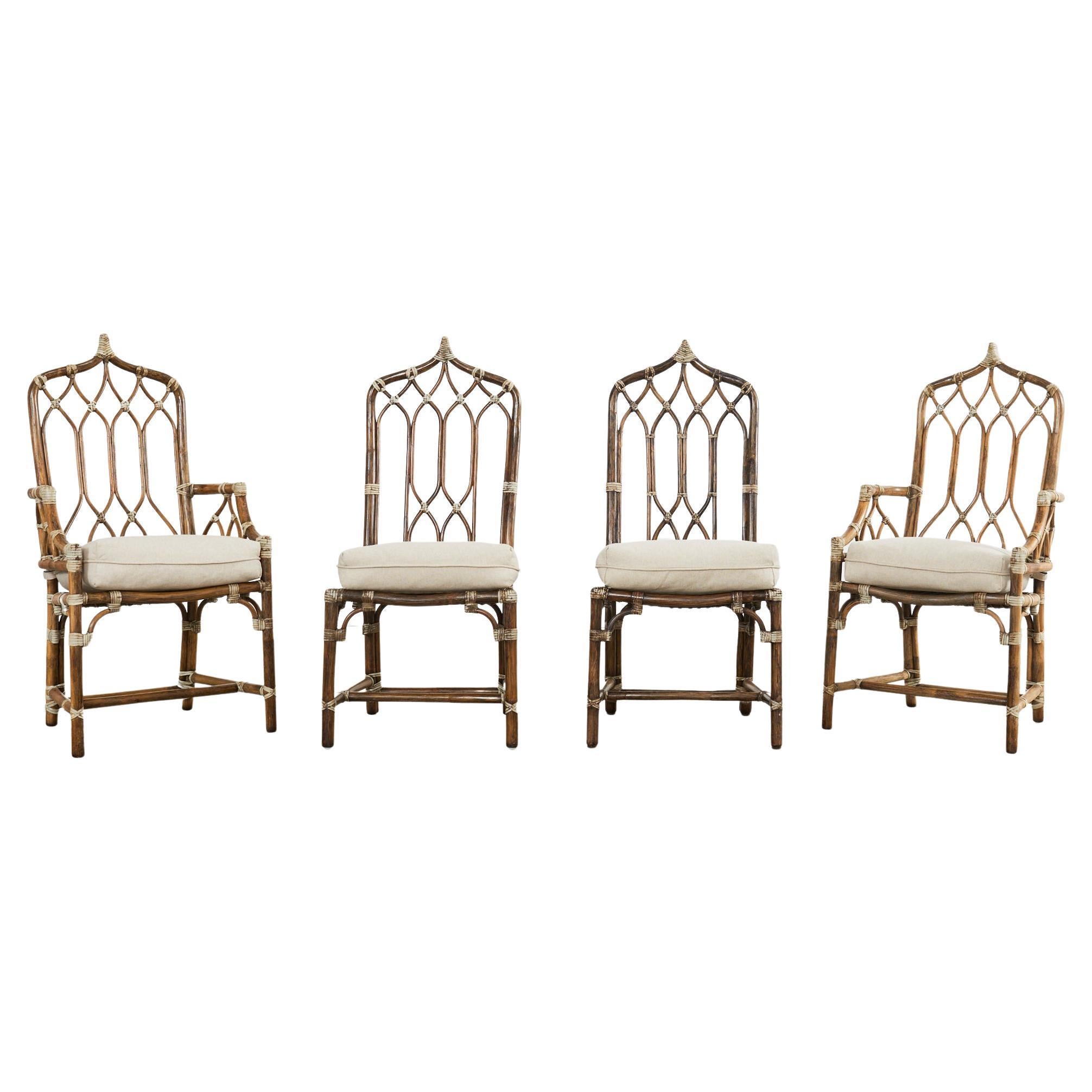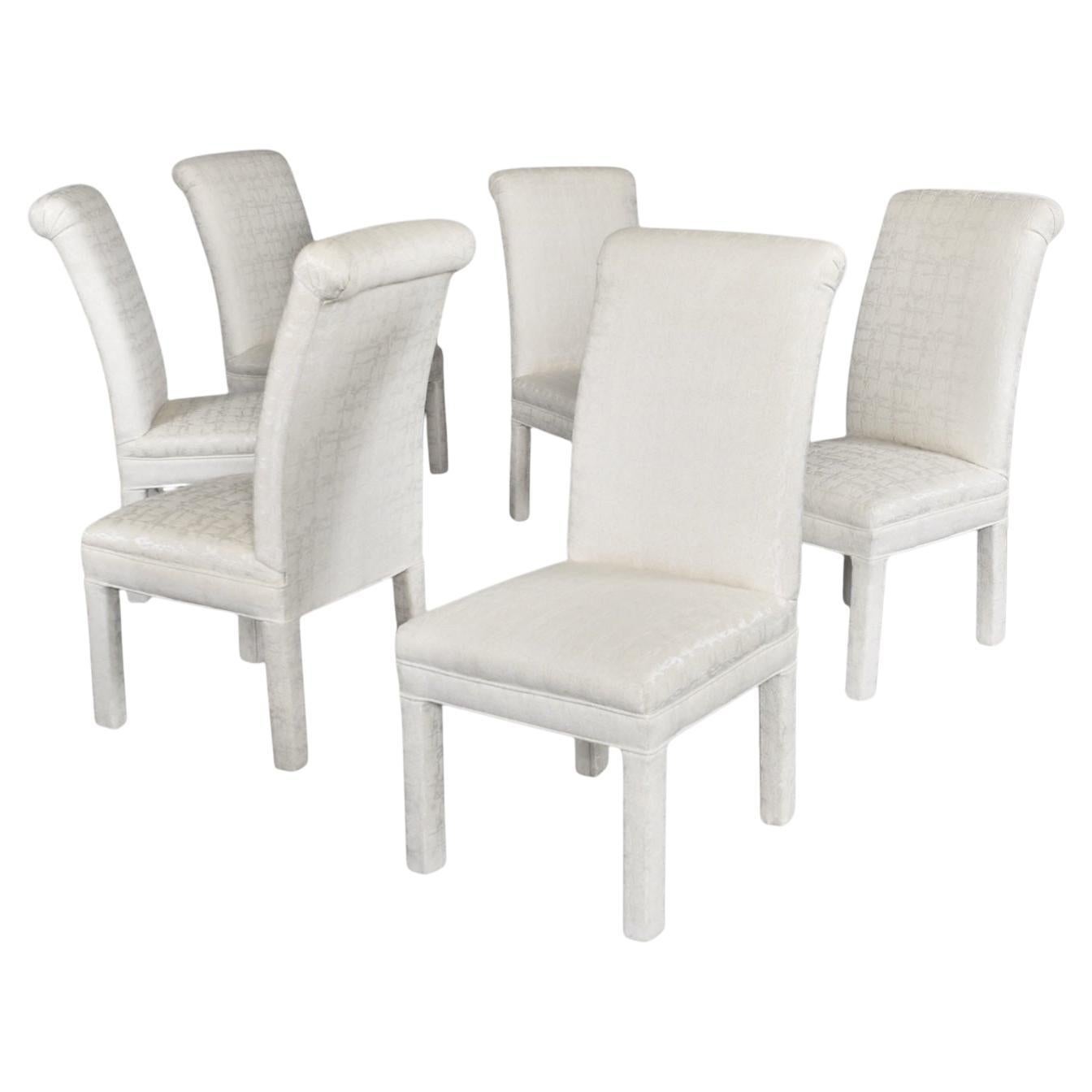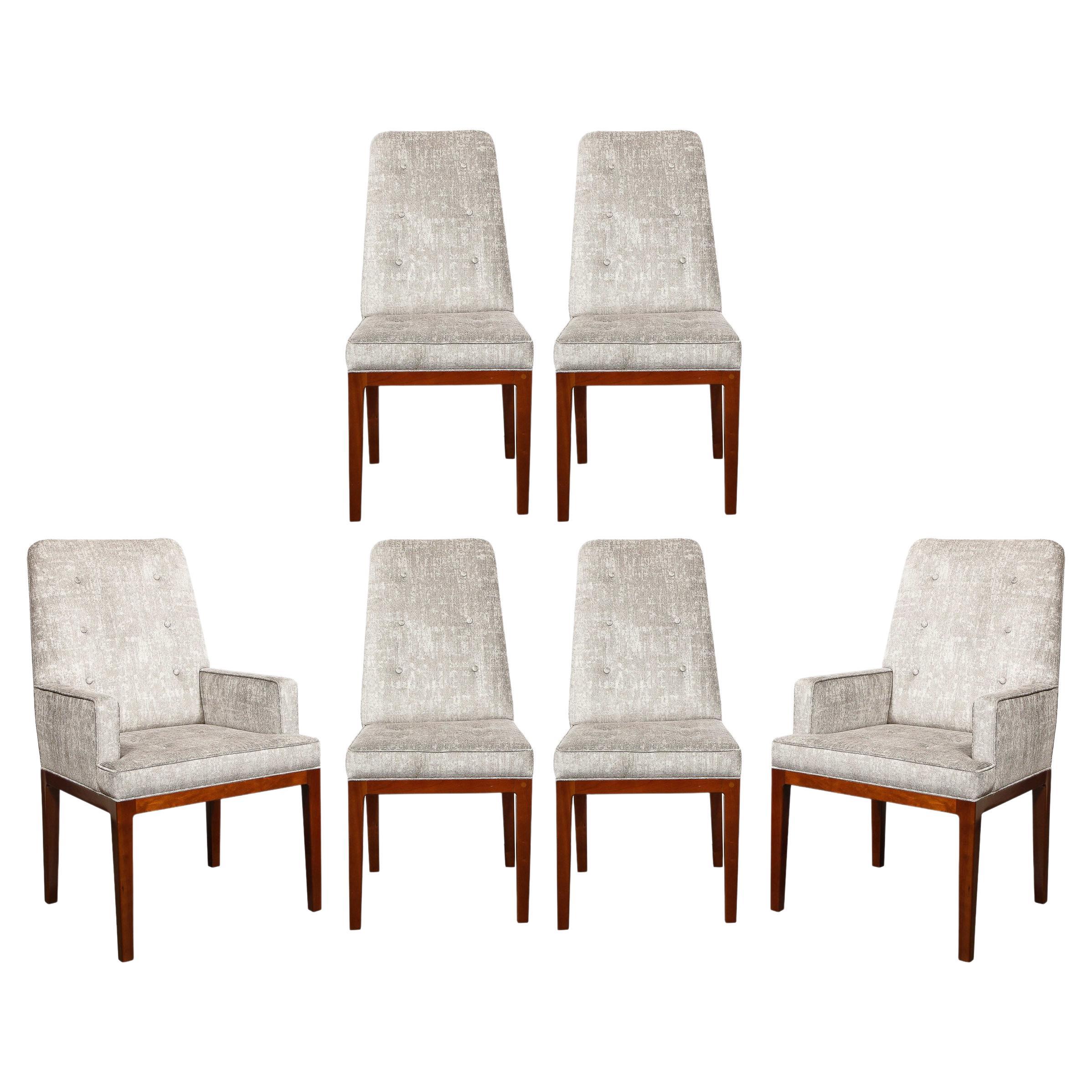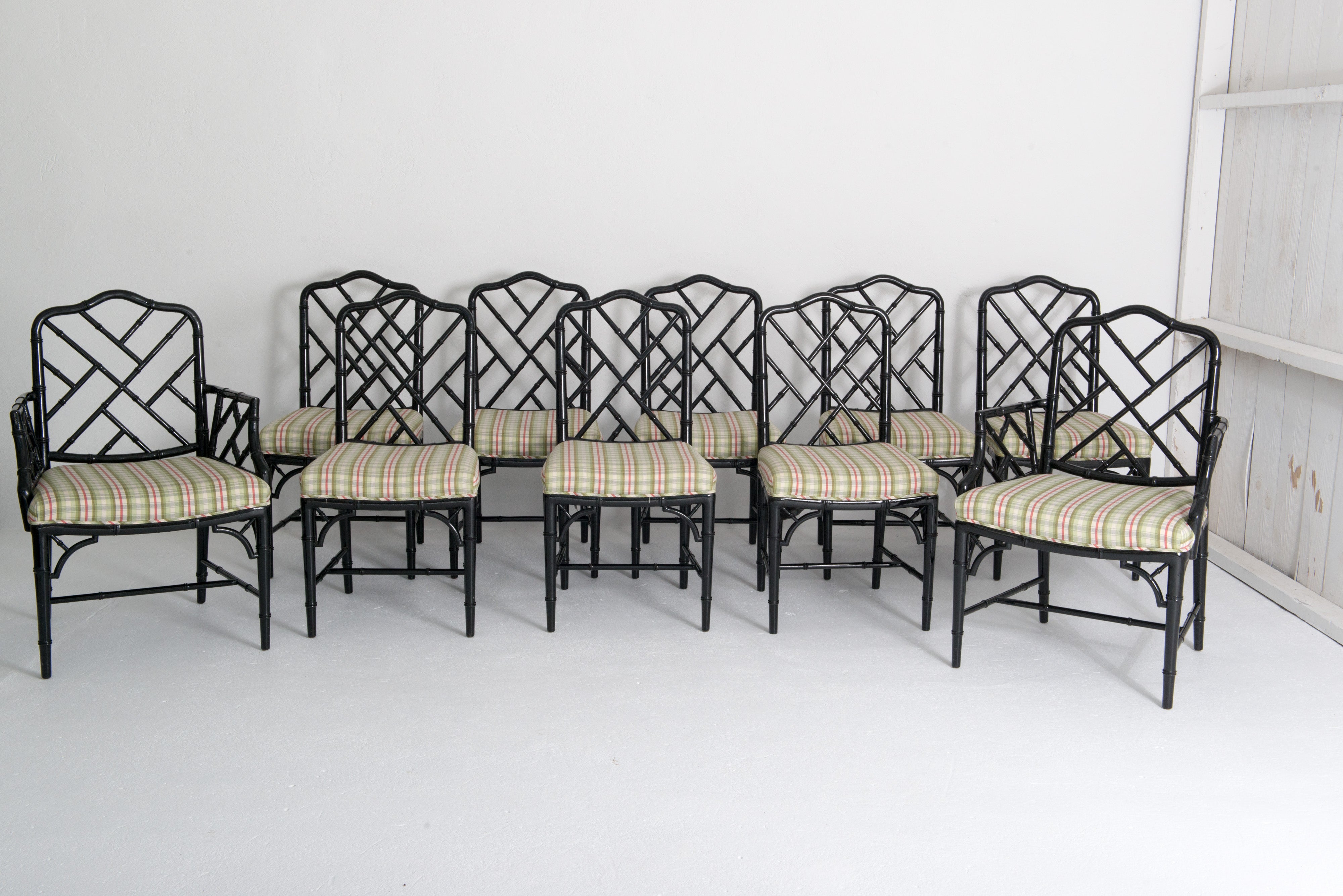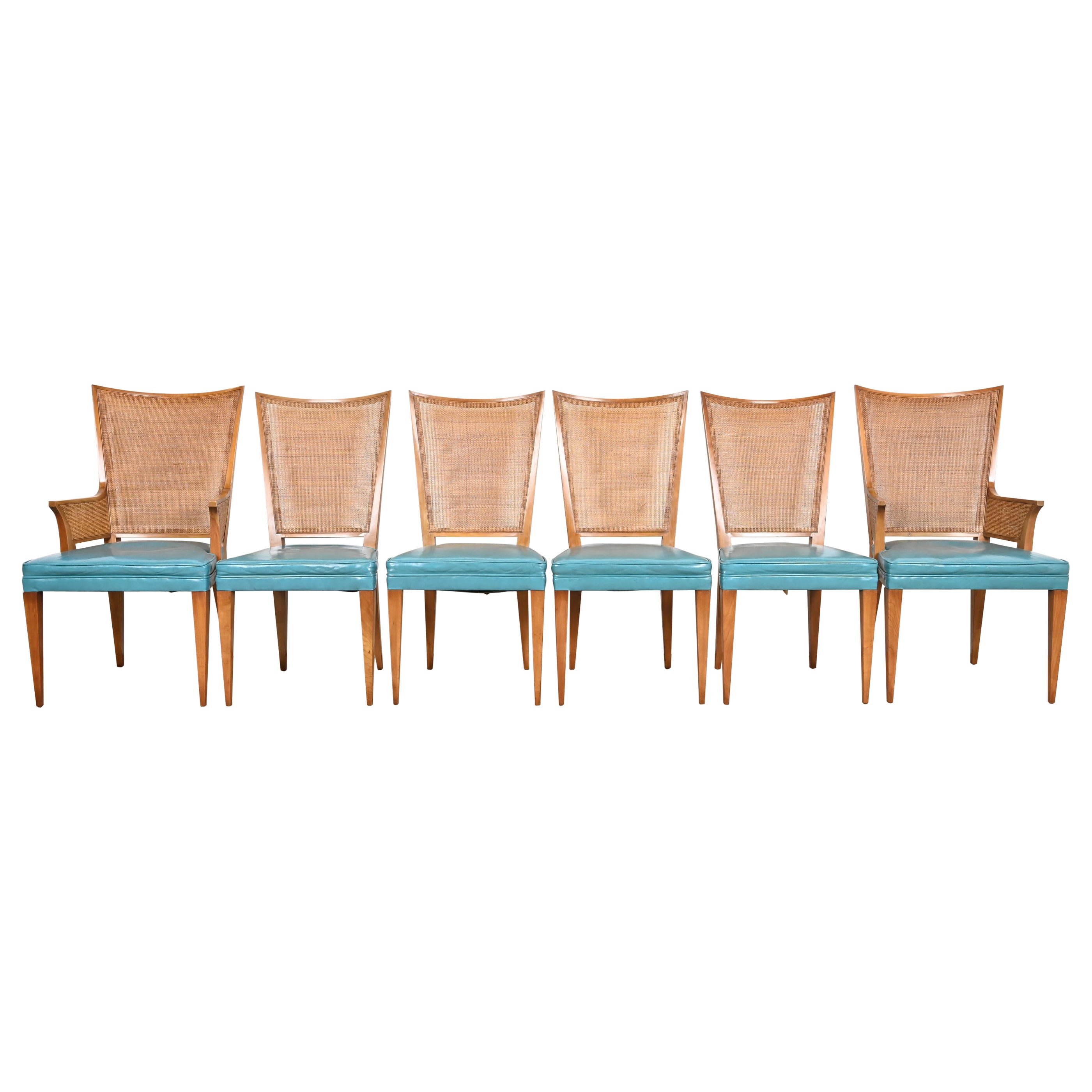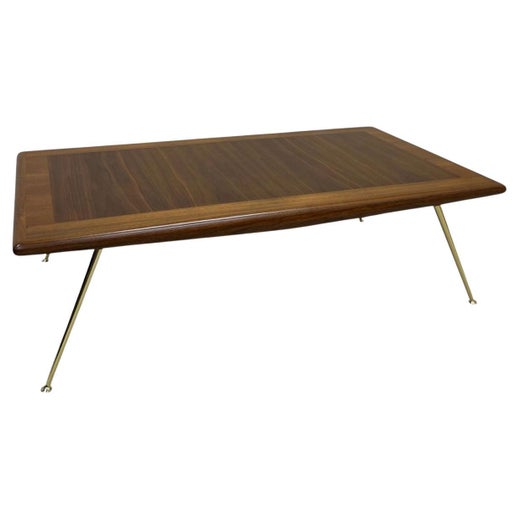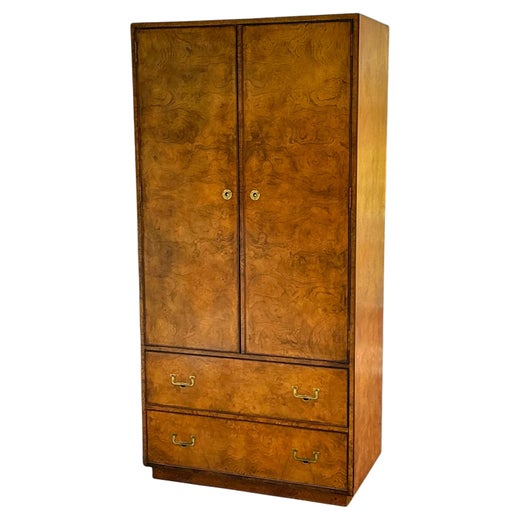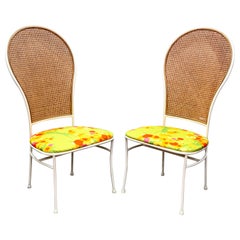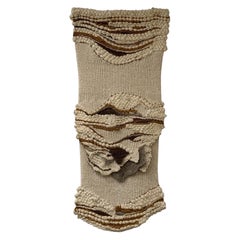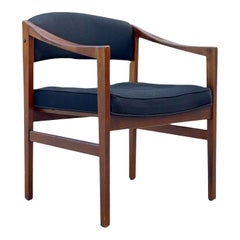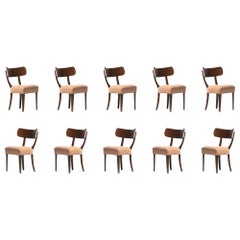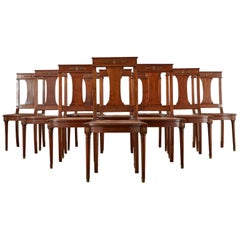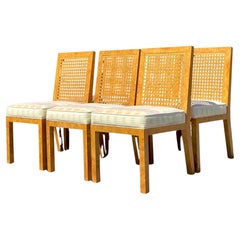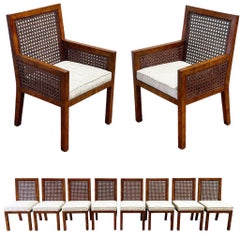
Ten Burl + Cane Parsons Dining Chairs, Rare Widdicomb Set of 10 Organic Modern
View Similar Items
Ten Burl + Cane Parsons Dining Chairs, Rare Widdicomb Set of 10 Organic Modern
About the Item
- Creator:John Widdicomb (Maker),Widdicomb Furniture Co. (Maker)
- Similar to:Milo Baughman (Designer)T.H. Robsjohn-Gibbings (Designer)
- Dimensions:Height: 35 in (88.9 cm)Width: 22.5 in (57.15 cm)Depth: 18.5 in (46.99 cm)Seat Height: 18 in (45.72 cm)
- Sold As:Set of 10
- Style:Organic Modern (Of the Period)
- Materials and Techniques:
- Place of Origin:
- Period:
- Date of Manufacture:1960s
- Condition:Reupholstered. Wear consistent with age and use. This set has been attended to by our team - each chair was carefully inspected and thoroughly cleaned. The frames are are sound and sturdy. Cane is free of any breaks. Brand new super soft oatmeal tone nubby chenille on the seats. This set is in exce.
- Seller Location:Decatur, GA
- Reference Number:1stDibs: LU6647233701902
Widdicomb Furniture Co.
Admirers of vintage mid-century modern furnishings likely recognize the Widdicomb Furniture Company name for the fruitful partnerships it forged with iconic designers such as Frank Lloyd Wright, T.H. Robsjohn-Gibbings and Mario Buatta. But there is more to the Widdicomb story than the albeit quite covetable sofas and bedroom furniture it produced during the middle of the 20th century.
A wealth of pine and oak forests rendered Grand Rapids, Michigan, a logging center during the 1800s, and it eventually gained recognition for its furniture industry. The American city became a destination for furniture makers who hailed from across the United States and beyond. Furniture maker George Widdicomb emigrated from England to the United States in 1845, eventually setting up a cabinet shop in Syracuse, New York, before moving west to Grand Rapids. There, he opened a shop with his four sons, including John Widdicomb, whose name would help carry the family legacy into the 20th century.
The Widdicomb shop in Grand Rapids prospered, as the patriarch’s formal English training allowed him to produce pieces with superior craftsmanship compared to those of his competitors. Although the Civil War halted business and took the life of one of the Widdicomb brothers, the family’s survivors would start anew as Widdicomb Brothers and Richards, soon renamed the Widdicomb Furniture Company.
John Widdicomb, however, split from the family business in 1897 to create the John Widdicomb Company, where he would go on to focus on Louis XV- and French Provincial-style furnishings. Chairs made in these styles have distinct characteristics, such as floral motifs carved in the frames and gently angled backrests. John's company also remained a family affair: The founder’s son, Harry, assumed control of the company when his father died in 1910, while John's nephew Ralph Widdicombe — who retained the English spelling of his last name and joined the John Widdicomb Company at its start — designed every single piece of the offerings at his uncle's manufacturing outfit until he retired in 1951. Ralph was an internationally distinguished furniture designer whose modern mahogany bedroom suite won first prize at the Paris Exposition in 1900.
The original iteration of Widdicomb, which was helmed by John's older brother William while John ran his own brand, had shifted from making period revival styles of furniture, such as Georgian and Chippendale, to manufacturing modern pieces in the late 1920s. Today vintage Widdicomb seating, tables and other pieces produced during the postwar years are particularly sought after by collectors of mid-20th-century furniture.
In 1959, master woodworker George Nakashima created his Origins collection for Widdicomb when the firm merged with Mueller Furniture Corporation and was known, for around 10 years, as Widdicomb-Mueller. Origins, a revered Shaker-influenced group of nightstands, upholstered lounge chairs, dining-room tables and more, saw Nakashima working with woods like Carpathian elm and laurel in his Pennsylvania studio.
Eventually, the two Widdicomb companies would combine in 1970, operating under the name John Widdicomb Co.
In 2002, the business closed after more than a century of operations, and its assets were acquired by Stickley Furniture. Interestingly, it was not the first time Widdicomb and Stickley overlapped: In the final years of the 19th century, the companies opened a shared storehouse in London, while John Widdicomb and Albert Stickley would travel Europe together for the purposes of research.
Find vintage Widdicomb coffee tables, case pieces, dining chairs and more on 1stDibs.
John Widdicomb
In the Widdicomb family, furniture ran in the blood. Furniture maker George Widdicomb emigrated from England to the United States in 1845, eventually setting up a cabinet shop in Syracuse, New York, before moving west to Grand Rapids, Michigan. There, he opened a shop with his four sons, including John Widdicomb, whose name would help carry the family legacy into the 20th century.
A wealth of pine and oak forests rendered Grand Rapids a logging center during the 1800s, and it eventually gained recognition for its furniture industry. The city became a destination for furniture makers who hailed from across the United States and beyond. The Widdicomb shop in Grand Rapids prospered, as the patriarch’s formal English training allowed him to produce pieces with superior craftsmanship compared to those of his competitors. Although the Civil War halted business and took the life of one of the Widdicomb brothers, the family’s survivors would start anew as Widdicomb Brothers and Richards, soon renamed the Widdicomb Furniture Company.
John Widdicomb, however, split from the family business in 1897 to create the John Widdicomb Company, where he would go on to focus on Louis XV- and French Provincial-style furnishings. Chairs made in these styles have distinct characteristics, such as floral motifs carved in the frames and gently angled backrests. John's company also remained a family affair: The founder’s son, Harry, assumed control of the company when his father died in 1910, while John's nephew Ralph Widdicombe — who retained the English spelling of his last name and joined the John Widdicomb Company at its start — designed every single piece of the offerings at his uncle's manufacturing outfit until he retired in 1951. Ralph was an internationally distinguished furniture designer whose modern mahogany bedroom suite won first prize at the Paris Exposition in 1900.
The original iteration of Widdicomb, which was helmed by John's older brother William while John ran his own brand, had shifted from making period revival styles of furniture, such as Georgian and Chippendale, to manufacturing modern pieces in the late 1920s. Admirers of mid-century modern furnishings likely recognize Widdicomb for the partnerships with iconic designers such as Frank Lloyd Wright, T.H. Robsjohn-Gibbings and Mario Buatta. In 1959, master woodworker George Nakashima created his Origins collection for Widdicomb when the firm merged with Mueller Furniture Corporation and was known, for around 10 years, as Widdicomb-Mueller. Origins, a revered Shaker-influenced group of nightstands, upholstered lounge chairs, dining-room tables and more, saw Nakashima working with woods like Carpathian elm and laurel in his Pennsylvania studio.
Eventually, the two Widdicomb companies would combine in 1970, operating under the name John Widdicomb Co.
In 2002, the business closed after more than a century of operations, and its assets were acquired by Stickley Furniture. Interestingly, it was not the first time Widdicomb and Stickley overlapped: In the final years of the 19th century, the companies opened a shared storehouse in London, while John Widdicomb and Albert Stickley would travel Europe together for the purposes of research.
Today, Stickley continues to produce John Widdicomb Company furniture, including French, Italian, English and Russian reproductions, as well as modern works from the first half of the 20th century.
Find vintage John Widdicomb bedroom furniture, tables, case pieces and more on 1stDibs.
More From This Seller
View AllVintage 1980s American Organic Modern Chairs
Metal, Wrought Iron
Vintage 1980s American Post-Modern Stools
Metal
Vintage 1970s American Organic Modern Tapestries
Textile, Yarn, Natural Fiber
Vintage 1960s American Mid-Century Modern Armchairs
Wool, Upholstery, Walnut
Vintage 1950s American Mid-Century Modern Lounge Chairs
Iron, Wrought Iron
Vintage 1960s American Mid-Century Modern Lounge Chairs
Fabric, Wood
You May Also Like
Mid-20th Century American Mid-Century Modern Dining Room Chairs
Upholstery, Walnut
Vintage 1940s American Mid-Century Modern Dining Room Chairs
Upholstery, Mahogany
Antique 19th Century French Empire Dining Room Chairs
Bronze
Mid-20th Century American Mid-Century Modern Dining Room Chairs
Upholstery, Cane, Burl
Vintage 1970s American Mid-Century Modern Dining Room Chairs
Upholstery, Wood
Vintage 1960s North American Mid-Century Modern Dining Room Chairs
Upholstery, Wood
Recently Viewed
View AllRead More
Rooms We Love: 11 Splendid Living Rooms
Common wisdom used to declare the kitchen the hub of the house. These days, the living room seems to have assumed the role of domestic focal point. Unlike the Victorian parlor, stiffly furnished and reserved for guests, today’s living room is a central place for reading, conversation and, well, living, with furnishings that lend themselves to both casual lounging and elegant entertaining.
1970s Corporate America Has Never Looked So Chic
Photographer Susan Ressler revisits the office life of decades past, whose style still resonates.
